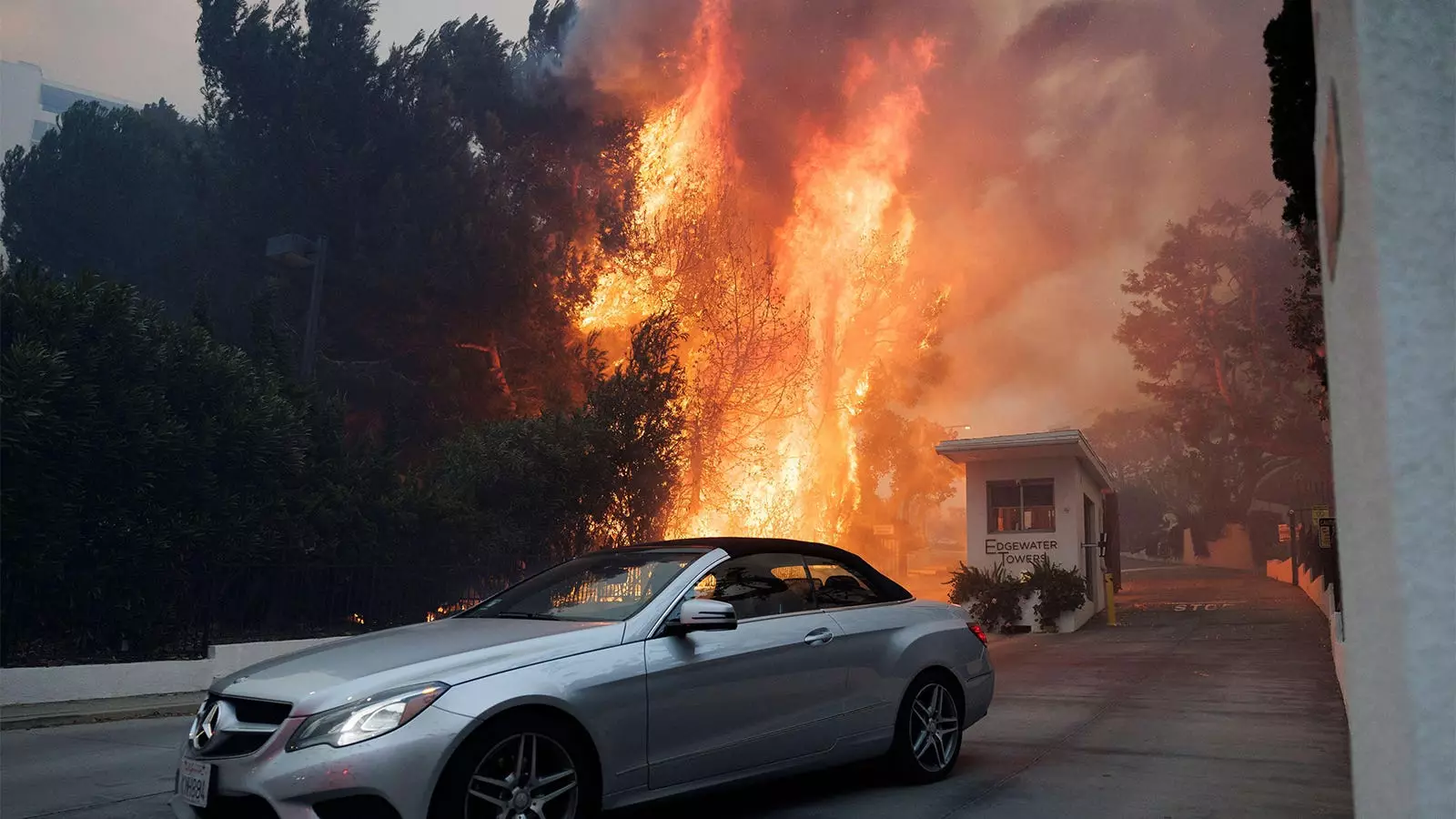Last Friday evening, as I navigated the 405 Freeway northbound, I found myself engulfed in a disquieting atmosphere. The bustling freeway, typically a hive of activity, lay strangely quiet, stripped of its characteristic congestion. Above, the sky bore witness to the Palisades fire, casting an uncanny tableau of swirling smoke that evoked thoughts of surrealist art—hazy formations distorted against the backdrop of a dimming sun. The chaotic shapes danced across the horizon, accentuating the severity of our environmental plight, as though nature itself was making a poignant accusation.
As I maneuvered past the Sepulveda Pass, the particles of ash appeared to formulate a tragic veil around my vehicle—a reminder of the destructive forces at play. The ever-present hum of helicopters and military aircraft penetrated the air, heightening the sense of urgency and fear that loomed over the city. Crossing into the San Fernando Valley on the 101 Freeway, a fiery glow beckoned from the distant hills, reminiscent of a volcano in action, a vivid reminder of how quickly our urban landscapes can transform into infernos.
Los Angeles is currently grappling with a catastrophic wildfire event that is unlike anything it has faced in the past. This year, fires have come dangerously close to urban environments, endangering not only homes but entire communities and their health. Wildfires have unleashed a torrent of toxic emissions—from PM2.5 particles to the byproducts of burned plastics and commercial materials—all of which contribute significantly to air pollution. The consequences of these emissions pose acute risks, particularly to first responders and residents alike who may not be adequately protected by personal protective equipment.
Equally alarming are the long-term implications of these chemical releases. Many individuals could face chronic health issues reminiscent of the fallout from the 9/11 attacks—an uptick in cancer diagnoses and ongoing immunological challenges for responders and residents in close proximity to the flames. Moreover, the psychological scars left by such disasters cannot be overlooked. Victims—young and old—may carry the burden of trauma, with an increase in anxiety and post-traumatic stress disorder looming large.
As an occupational and environmental medicine physician, the current wildfire crisis serves as a clarion call for our field. Our expertise is integral to navigating the complexities of environmental health crises. Our profession has consistently been at the forefront during previous disasters, such as the World Trade Center aftermath and the COVID-19 pandemic. We have developed protocols and frameworks to protect first responders and communities, ensuring that they receive proper care and monitoring for exposure-related health concerns.
To effectively manage current and future crises, it is imperative that we create robust environmental monitoring systems. These systems should track air quality, pollutant levels, and available healthcare resources—all accessible to the public via real-time dashboards. This approach will facilitate timely interventions and promote community resilience in the face of climate-related disasters.
Despite the urgent need for skilled professionals, the field of occupational and environmental medicine is shrinking. As of 2020, only 25 accredited residency programs remain in the United States, with many others ceasing to exist over the years. This diminished workforce cannot adequately respond to the growing environmental challenges we now face. It is essential to invest in and expand residency programs to train more specialists who can develop and implement comprehensive resilience strategies.
Los Angeles is uniquely positioned to lead the charge in environmental innovation. By combining advanced data analytics with medical expertise, we can create a blueprint for cities to not only endure but thrive in the face of ecological adversities. Central to this initiative is the establishment of partnerships with technology innovators to develop cutting-edge tools that enhance environmental monitoring and public health responses.
The skies may be tinged with smoke, but our vision for a healthier, more adaptive future is undeterred. The collective experiences of the current crisis call for an enhanced vision of environmental stewardship and public health readiness. It is crucial that we not only confront the fires of today but also prepare for the flames of tomorrow.
Ultimately, if we channel our efforts towards comprehensive and data-driven strategies, we can emerge from this crisis not just as survivors, but as pioneers in fostering sustainable ecological balance. The challenges faced by Los Angeles serve as both a warning and a reminder: we are at a critical juncture where our actions can shape a resilient future, demonstrating that adaptability and human ingenuity can prevail even in the most trying times.

Leave a Reply